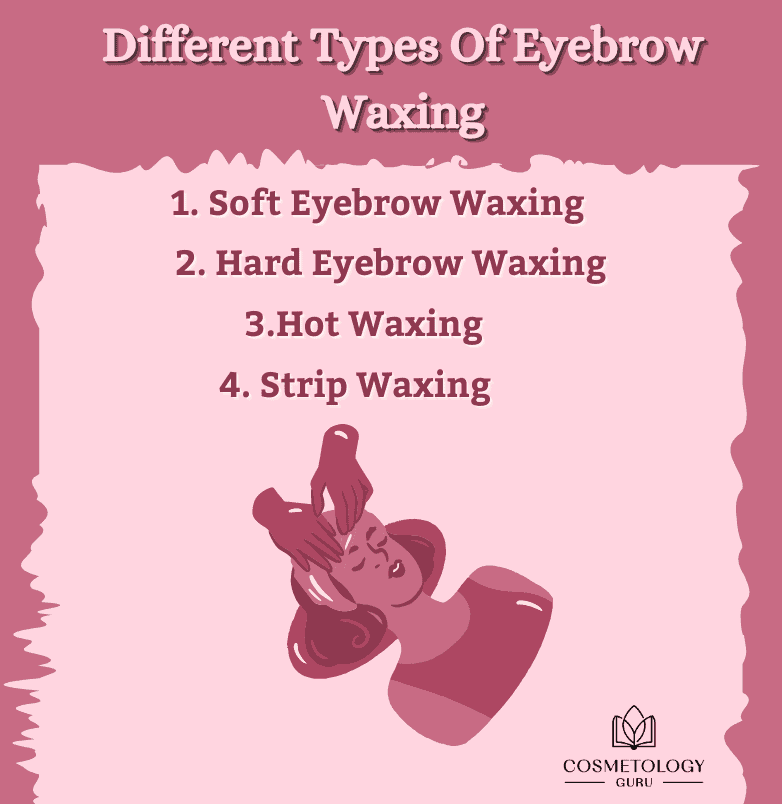Did you know that add-on services are a great way to build a name for yourself and set yourself apart from the competition?
It’s easy to focus on color, cuts, and other hair services. But don’t sell yourself short! With a master cosmetology or esthetics license you’re allowed to do other in-demand services like eyebrow waxing, lash extensions, and manicures.
One of the easiest add-on services to get started with is eyebrow waxing. It’s quick, it doesn’t cost a lot in supplies, and just about everyone gets their eyebrows waxed at some point. And from a client’s perspective, it’s much easier for them to get their hair and eyebrows done at once by the same person!
In this article, we will explore everything you need to know about eyebrow waxing as an esthetician, including its benefits, different types of waxing, preparation tips, and aftercare.
Understanding Eyebrow Waxing
Eyebrow waxing is a technique that involves the application of heated wax on the eyebrow area to remove unwanted hair. It is a quick and efficient method that provides long-lasting results compared to other hair removal techniques. As an esthetician, it is crucial to have a deep understanding of eyebrow structure and hair growth patterns to achieve desirable outcomes for your clients.
Benefits of Eyebrow Waxing
Eyebrow waxing offers several benefits for your clients:
- Precise Shaping: Waxing allows you to shape the eyebrows with precision, enhancing the natural features of the face.
- Long-Lasting Results: Unlike plucking or threading, waxing removes hair from the root, providing longer periods of hair-free eyebrows.
- Efficient and Time-Saving: Waxing is a quick technique that can remove multiple hairs simultaneously, saving time during the treatment.
- Smooth and Even Skin: Waxing not only removes hair but also exfoliates the skin, leaving it smooth and rejuvenated.
- Minimal Discomfort: With proper technique and high-quality wax, discomfort during eyebrow waxing can be minimized.
Different Types of Eyebrow Waxing
There are various types of eyebrow waxing techniques that estheticians can offer:

1. Soft Eyebrow Waxing
Soft waxing involves the application of a thin layer of warm wax on the eyebrow area, followed by the placement of a fabric strip. The strip is then swiftly pulled in the opposite direction of hair growth, removing the hair from the root.
2. Hard Eyebrow Waxing
Hard waxing, also known as stripless waxing, utilizes a thick, heated wax that hardens upon cooling. The esthetician applies the hardened wax directly to the eyebrow area and allows it to set. Once the wax hardens, it is gently lifted from one end, removing the hair along with it.
3. Strip Waxing
Strip waxing involves the application of a thin layer of warm wax on the eyebrow area, followed by the placement of a fabric or paper strip. The strip is then quickly pulled off in the opposite direction of hair growth, taking the hair with it.
4. Hot Waxing
Hot waxing, also known as peel-off waxing, utilizes a specialized wax formula that hardens upon cooling without the need for fabric or paper strips. The esthetician applies the heated wax directly to the eyebrow area and allows it to cool and harden. Once hardened, the wax is peeled off, removing the hair.
Preparing for Eyebrow Waxing
Before performing eyebrow waxing, it is important to follow these essential preparation steps:
Consultation with Clients
Begin the session by having a thorough consultation with your clients. Discuss their desired eyebrow shape, any concerns, and any previous experiences with eyebrow waxing. This will help you tailor the treatment to their specific needs.
Patch Test
Perform a patch test on a small area of the client’s skin to check for any adverse reactions or allergies to the wax or other products used during the treatment. This is crucial to ensure the client’s safety and prevent any potential skin complications.
Hygiene and Sanitation
Throughout the entire procedure, uphold stringent standards for sanitation and hygiene. Make sure that your workspace, tools, and hands are all sanitized and clean. To reduce the risk of infections, use sterile equipment, fresh towels, and disposable gloves.
Client Comfort
For your clients, create a welcoming and tranquil environment. Provide them with a spotless and cozy seating arrangement, regulate the room’s temperature, and supply sufficient illumination for the procedure. Assuring your clients’ comfort and addressing any issues they may have requires communication throughout the process.
Eyebrow Waxing Procedure
To perform eyebrow waxing effectively, follow these step-by-step procedures:
1. Preparation of the Eyebrow Waxing Area
Cleanse the eyebrow area using a gentle cleanser to remove any makeup, oils, or dirt. This ensures that the wax adheres properly to the hair and skin.
2. Application of Wax
Choose the appropriate type of wax based on the client’s skin type and preferences. Warm the wax to the desired temperature and apply it evenly to the eyebrow area using a spatula or applicator, following the natural eyebrow shape.
3. Hair Removal Technique
To ensure proper adhesion, cover the wax with a fabric or paper strip. To establish a firm grip, gently press the strip onto the waxed surface. With one hand holding the skin taut, use the other to quickly peel the strip off in the opposite direction of hair development. Quick action is required to reduce discomfort.
4. Tweezing and Trimming
After waxing, inspect the eyebrows for any stray or uneven hairs. Use tweezers to pluck any remaining unwanted hairs and a small pair of scissors to trim the eyebrows to the desired shape and length.
Aftercare for Eyebrow Waxing
Proper aftercare is essential to ensure the client’s comfort and maintain the results of the eyebrow waxing:
Soothing and Calming the Skin
Apply a soothing and calming lotion or gel to the waxed eyebrow area to reduce any redness or inflammation. Look for products that contain ingredients like aloe vera or chamomile, which are known for their calming properties.
Moisturizing the Eyebrow Area
Advise your clients to moisturize the waxed eyebrow area regularly to keep the skin hydrated. Recommend a lightweight, non-noncomedogenic moisturizer that will not clog the pores or cause breakouts. This will help maintain the skin’s elasticity and prevent dryness.
Avoiding Sun Exposure
Instruct your clients to avoid direct sunlight and tanning beds for at least 24 to 48 hours after eyebrow waxing. The skin may be more sensitive to UV rays during this time, and sun exposure can increase the risk of skin irritation or pigmentation issues.
Preventing Infections
Educate your clients about the importance of keeping the waxed area clean and avoiding touching it with dirty hands. Advise them to avoid swimming pools, saunas, or hot tubs for a day or two after the treatment to minimize the risk of bacterial infections.
Common Challenges and Troubleshooting
During eyebrow waxing, estheticians may encounter certain challenges. Here are some common issues and how to address them:
Wax Residue
If there is wax residue left on the skin after the procedure, use a gentle oil-based cleanser or baby oil to remove it. Gently massage the affected area until the wax is dissolved, and then cleanse the skin with a mild cleanser.
Skin Irritation
In case of skin irritation or redness, apply a cold compress or aloe vera gel to soothe the affected area. Advise your clients to avoid scratching or picking at the irritated skin, as this can worsen the condition.
Ingrown Hairs
Ingrown hairs can occur after waxing. To prevent them, exfoliate the eyebrow area gently a few times a week using a soft brush or a mild exfoliating scrub. This helps remove dead skin cells and allows the hair to grow out without obstruction.
Tips for Providing Excellent Eyebrow Waxing Services
To excel in providing eyebrow waxing services, consider the following tips:
Communication and Consultation
Have open and clear communication with your clients to understand their preferences and expectations. Provide expert advice on eyebrow shapes that complement their facial features, taking into account their individual face shape and natural eyebrow growth patterns.
Attention to Detail
Pay close attention to detail during the entire process. Ensure symmetry between the eyebrows, remove all unwanted hair, and shape the eyebrows precisely according to the client’s desired outcome.
Continual Education and Training
Stay updated with the latest trends and techniques in eyebrow waxing. Attend workshops, seminars, or online courses to enhance your skills and knowledge. Continual education and training will help you deliver exceptional services to your clients.
Conclusion
Eyebrow waxing is a valuable skill for estheticians, providing clients with well-groomed and defined eyebrows. By understanding the different waxing techniques, proper preparation, and aftercare, you can offer a professional and enjoyable experience for your clients. Remember to prioritize safety, cleanliness, and effective communication to ensure customer satisfaction.
FAQs (Frequently Asked Questions)
1. How long does eyebrow waxing last?
Eyebrow waxing typically lasts for about 4-6 weeks. However, the duration may vary depending on individual hair growth patterns and factors such as hormones and metabolism.
2. Is eyebrow waxing painful?
Eyebrow waxing may cause some discomfort, especially for individuals with sensitive skin. However, the sensation is usually brief and tolerable. Using high-quality wax and proper technique can help minimize discomfort during the procedure.
3. Can I wax my eyebrows at home?
While it is possible to wax your eyebrows at home, it is recommended to seek professional help from a trained esthetician. Estheticians have the expertise to shape the eyebrows correctly and minimize the risk of errors or injuries. DIY waxing can lead to uneven results or potential skin damage if not done correctly.
4. How often should I get my eyebrows waxed?
The frequency of eyebrow waxing depends on the individual’s hair growth rate and personal preferences. Generally, it is recommended to get your eyebrows waxed every 4-6 weeks to maintain their shape and keep them looking well-groomed.
5. Can I wear makeup immediately after eyebrow waxing?
It is advisable to avoid applying makeup directly on the waxed eyebrow area immediately after the procedure. The skin may be slightly sensitive and prone to irritation. Wait for a few hours or follow the esthetician’s recommendations before applying any makeup products.
Are you in beauty school? Take our free cosmetology practice test to see if you’re ready to pass the exam!


